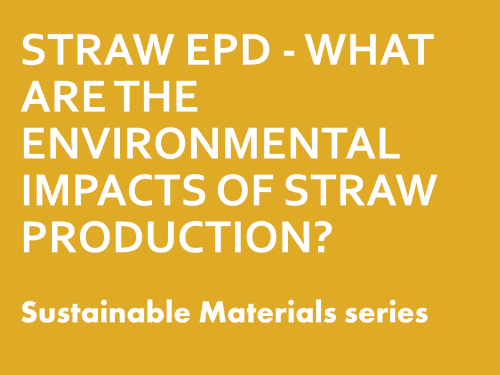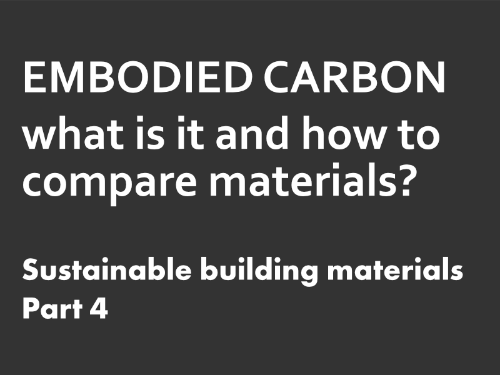Articles on some of the different facets of making a sustainable building


Straw EPD - quantifying the environmental impacts of straw production
In October last year an Environmental Product Declaration (EPD) was published for Straw as Insulation Material in the UK. This was the culmination of months of research and discussions, funded and led by The School of Natural Building and the European Interreg-funded project Up Straw project.

Life Cycle Assessment, Part 3: Relative proportion of embodied and operational carbon
This post is a somewhat belated follow up to the last three posts, which looked at embodied carbon of building materials, introduced whole-building life cycle assessment (LCA), and finally explained LCA further with a worked example. A key point from those blogs was that it was essential to look at the emissions and energy use of a building over it’s entire life span

Life Cycle Assessment, Part 2: example carbon assessment for a Passivhaus building.
This post follows directly from the last two, which looked at ways to compare the embodied carbon of different materials. This post puts that into practice with an example using life cycle assessment to compare the differing carbon impacts of different options for a passivhaus design.

Life Cycle Assessment, Part 1.
In the last blog-post I looked at ways of comparing the embodied carbon of different materials. This post applies that to the lifespan of a building, giving an explanation of life cycle assessment, looking at what it includes, how, and why it’s important.

Embodied Carbon - what is it and how to compare materials? Sustainable building materials, Part 4
Sustainable building must mean producing as little CO₂ as possible. That means low or zero carbon emissions from both construction and use of a building. Choices of material can have a huge impact on this.

